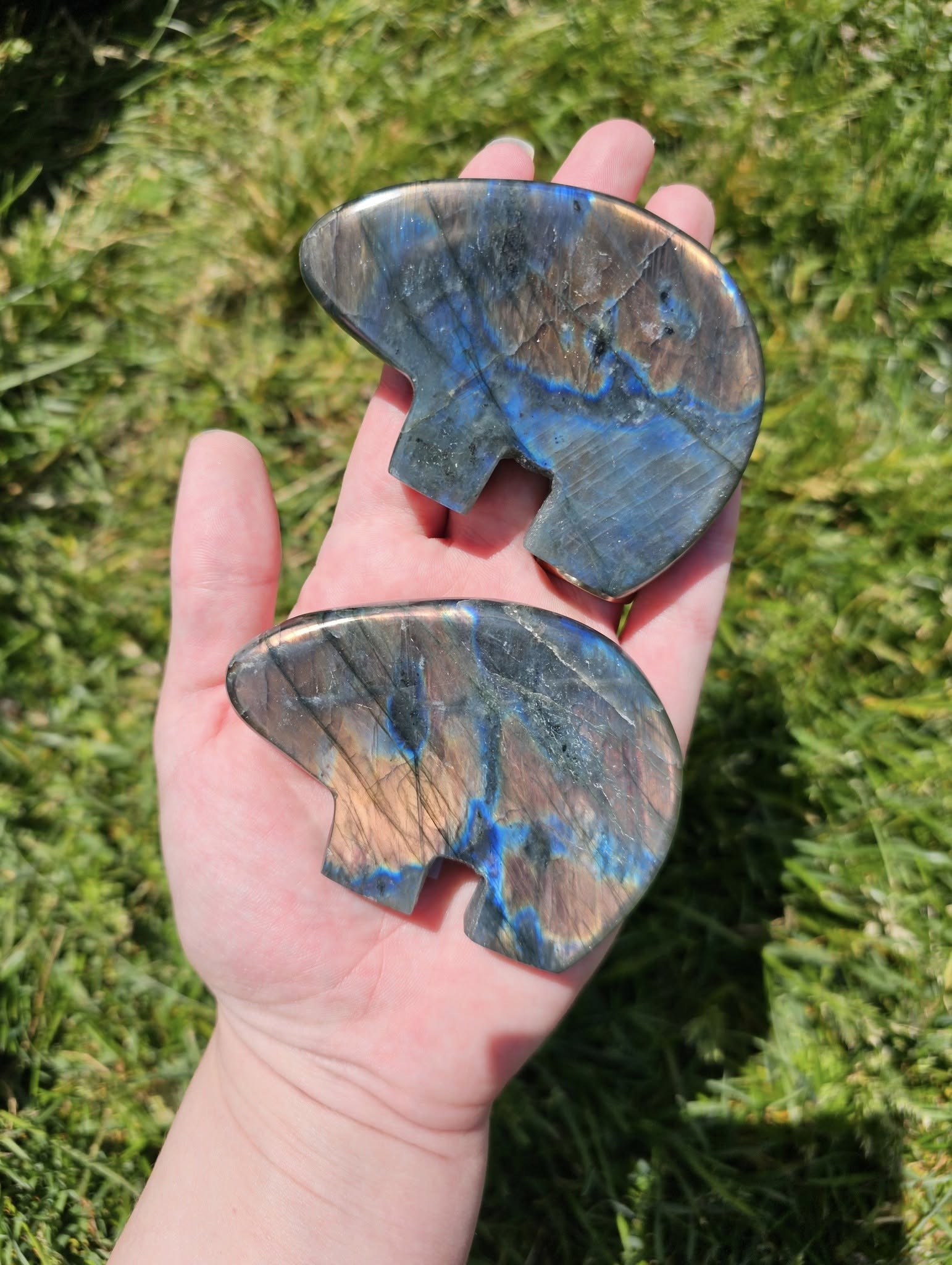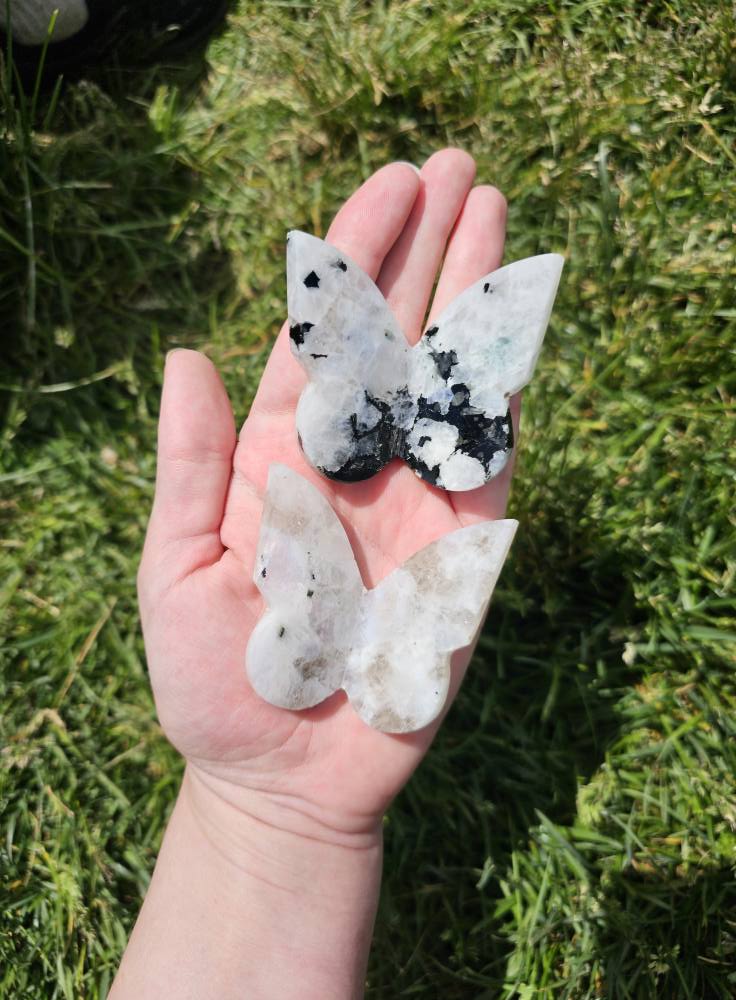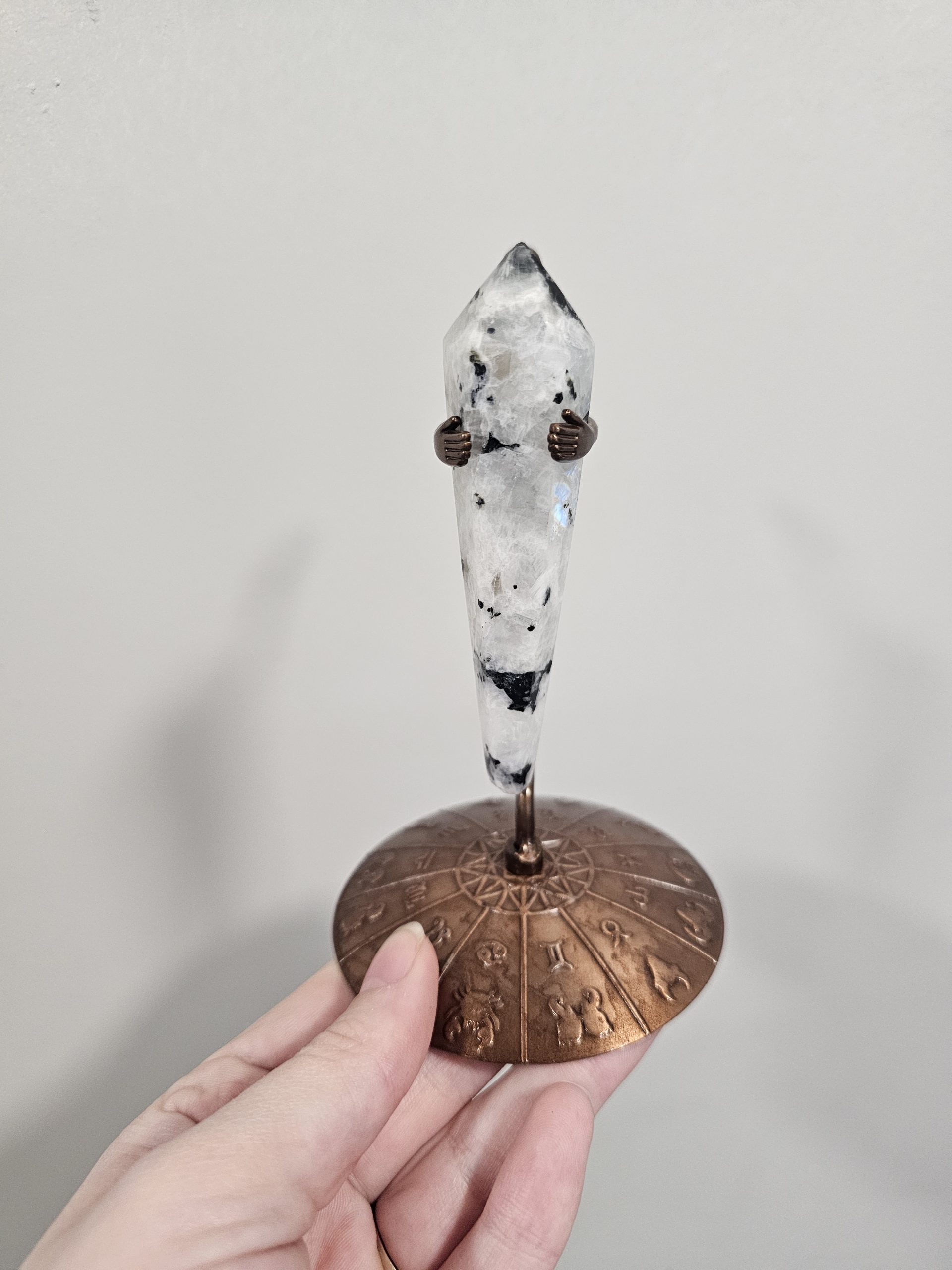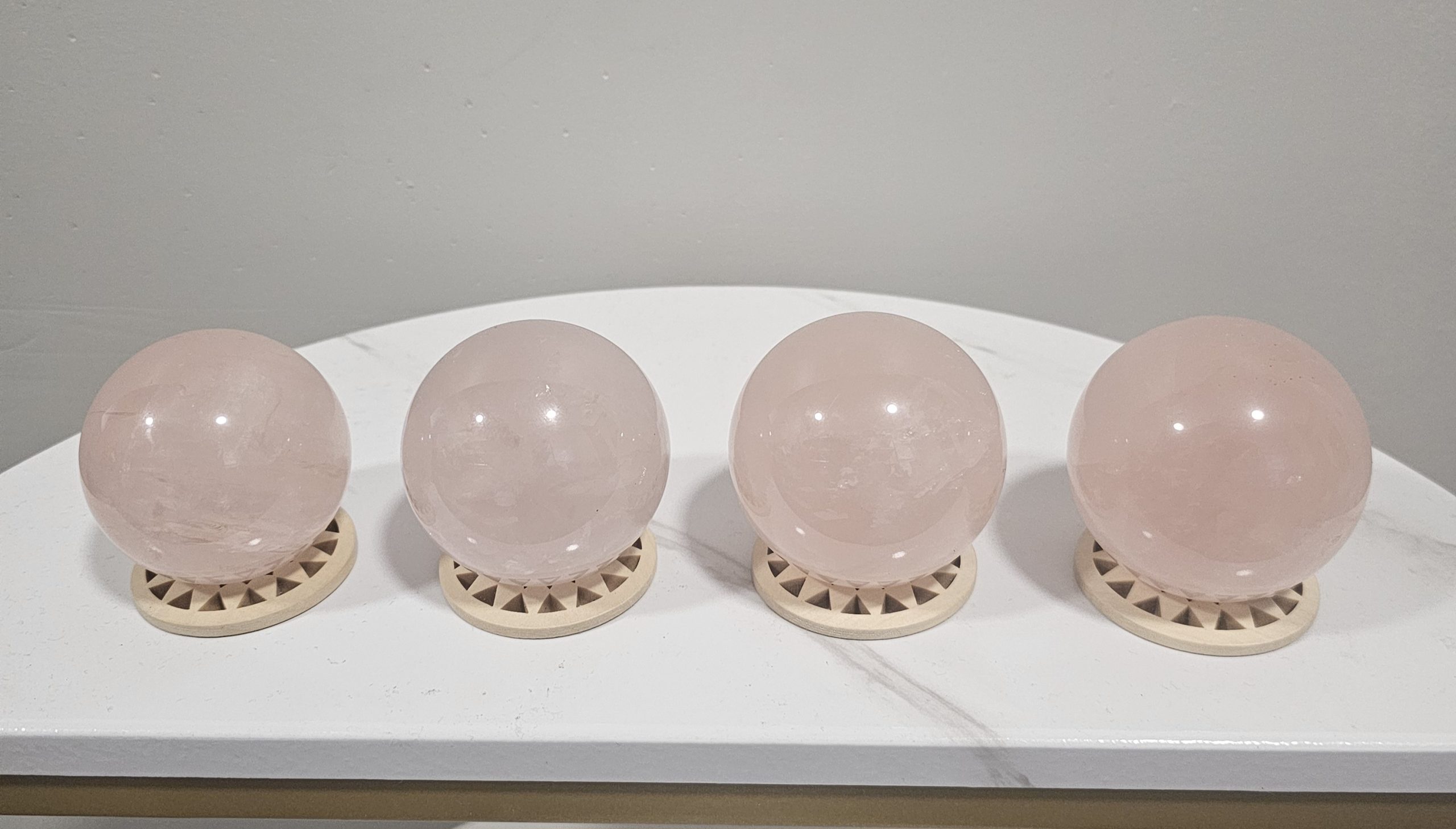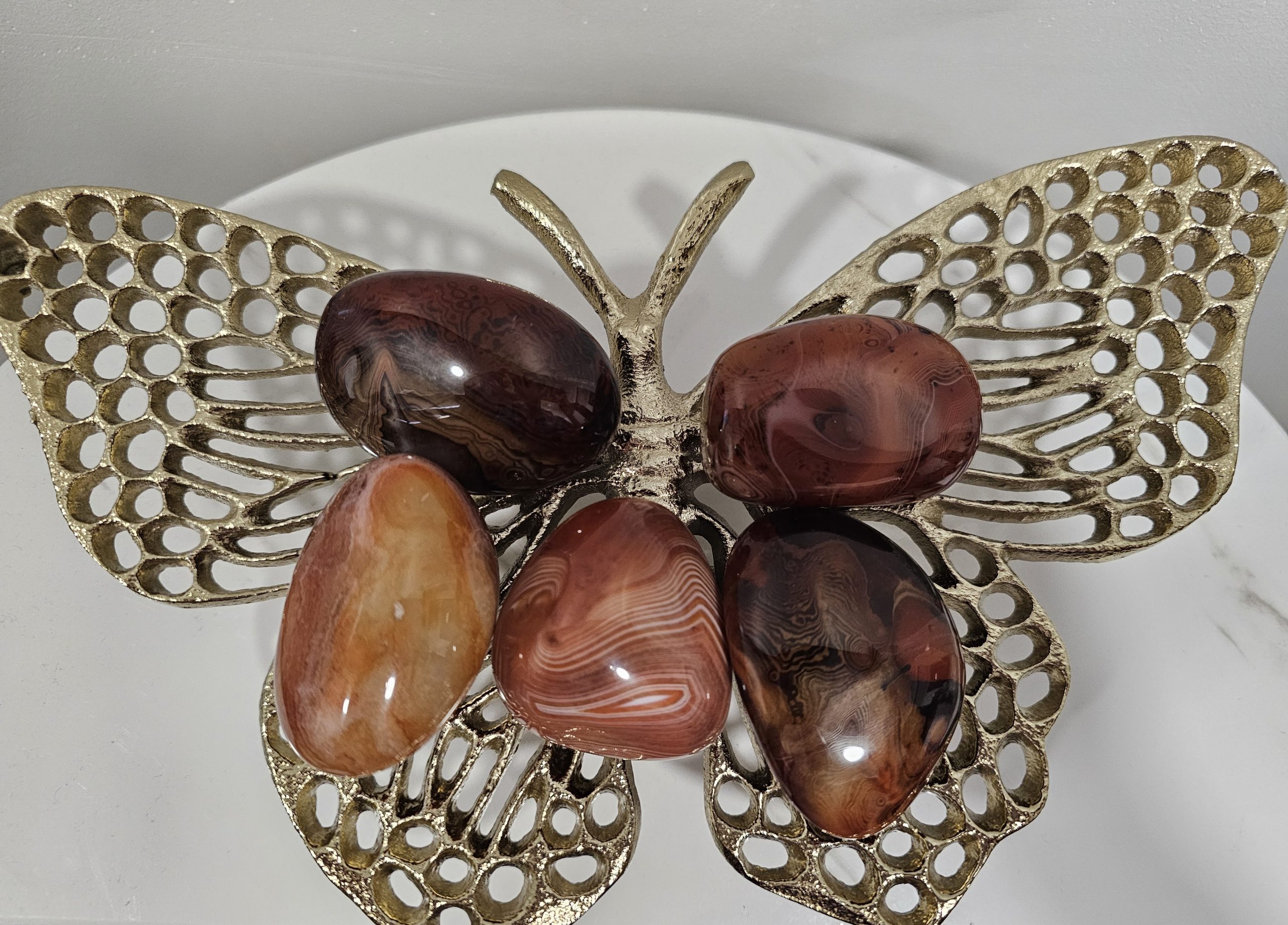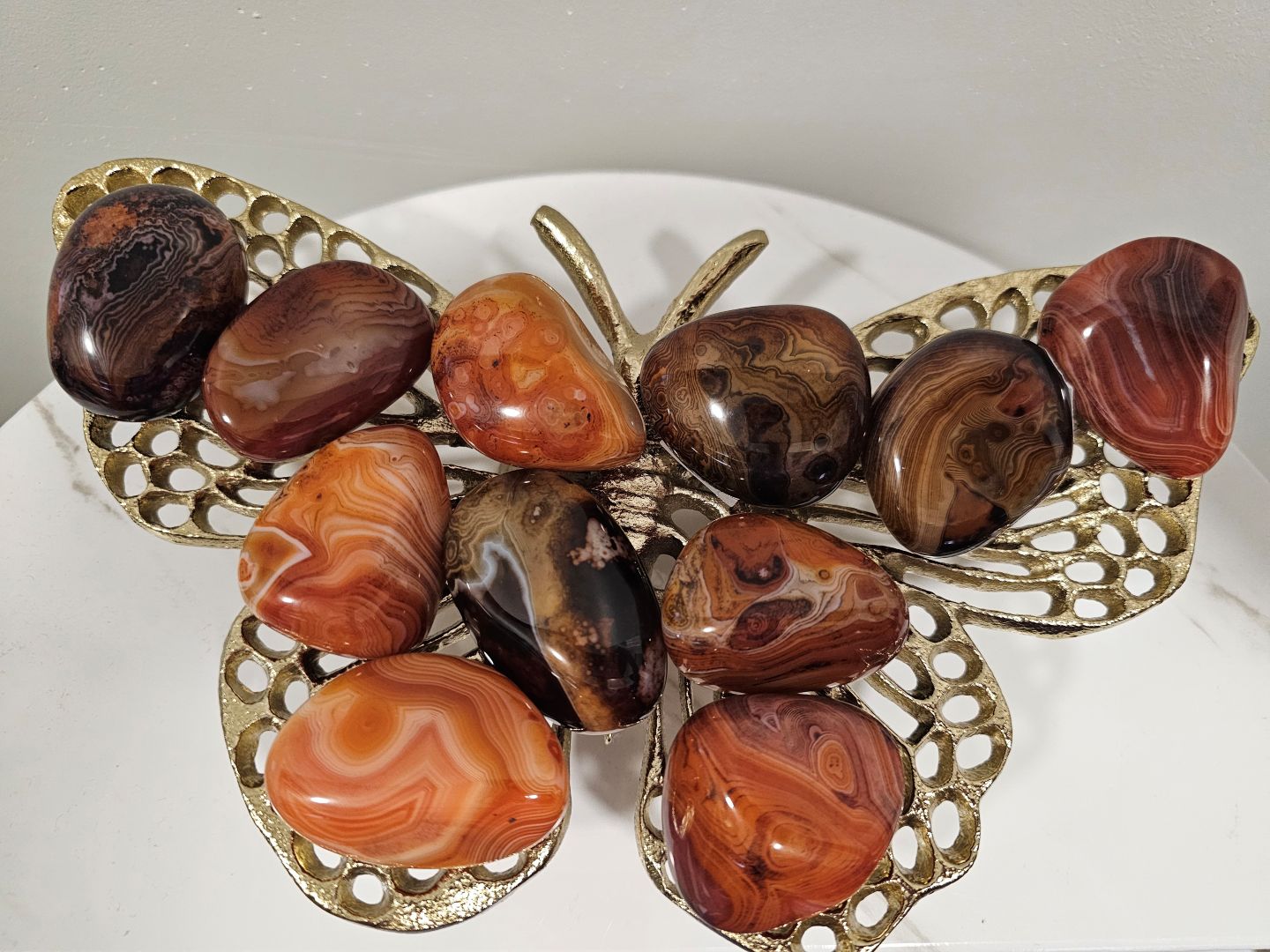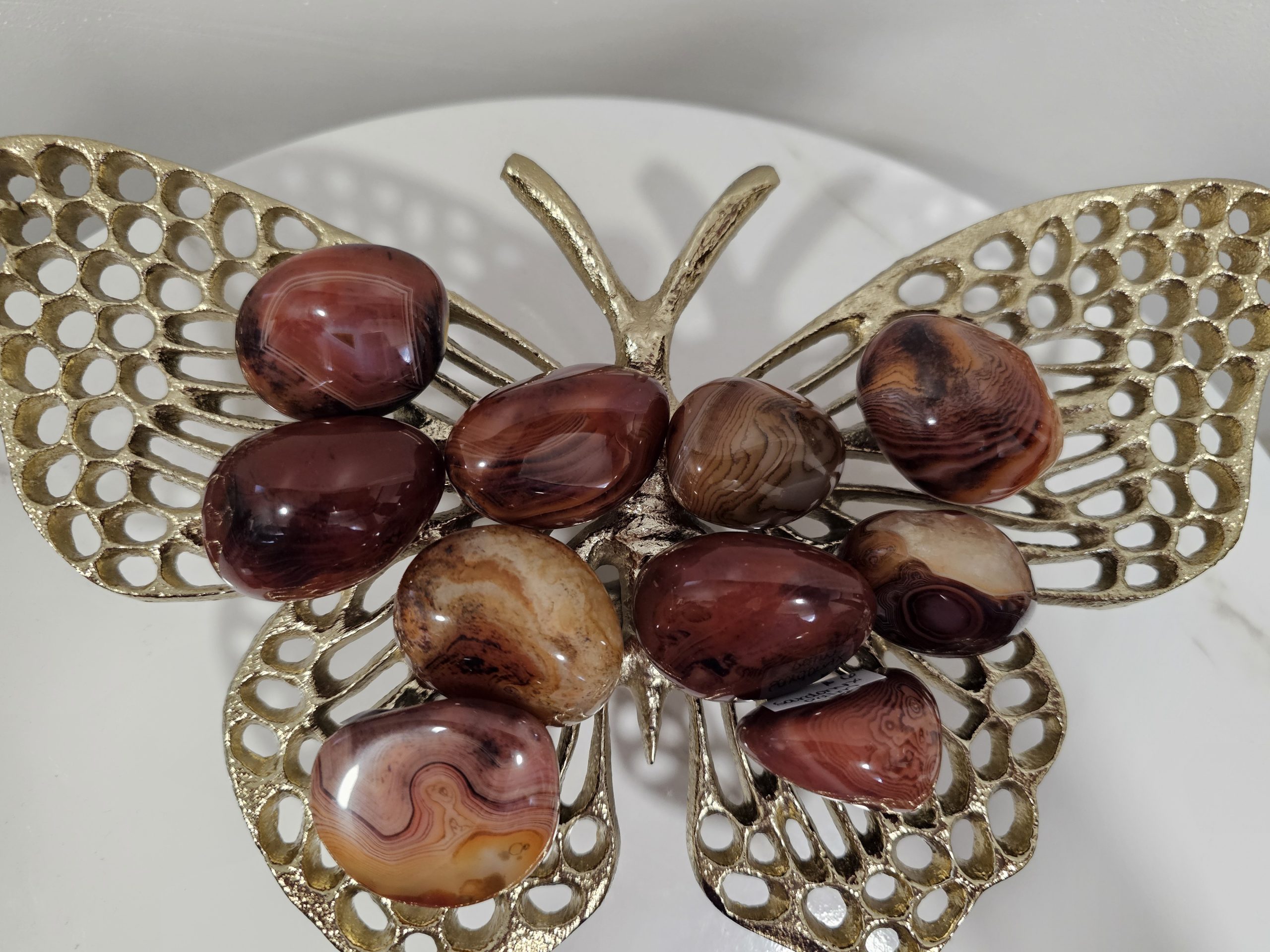-
Labradorite is a type of feldspar that gets it's flashy colors from intergrowths within the mineral. Light then travels through these intergrowths and displays its beautiful colors. These colors can range from purples and blues to greens and yellows. This mineral gets its name from where it was originally discovered, in Labrador, Canada. This mineral was also found in Finland during WWII and was also known as "Falcon's Eye".
-
Moonstone is a sodium potassium aluminum silicate mineral that belongs to the feldspar group. This mineral has a opalescent sheen similar to labradorite and this comes from the light deflection that comes from the feldspar layers within the stone. This beautiful mineral is found in Myanmar, Madagascar, Brazil, Australia, and India.
-
Moonstone is a sodium potassium aluminum silicate mineral that belongs to the feldspar group. This mineral has a opalescent sheen similar to labradorite and this comes from the light deflection that comes from the feldspar layers within the stone. This beautiful mineral is found in Myanmar, Madagascar, Brazil, Australia, and India.
-
Moonstone is a sodium potassium aluminum silicate mineral that belongs to the feldspar group. This mineral has a opalescent sheen similar to labradorite and this comes from the light deflection that comes from the feldspar layers within the stone. This beautiful mineral is found in Myanmar, Madagascar, Brazil, Australia, and India.
-
Rose Quartz is an anhedral crystal. It is found in the cores of pegmatites and gets its color from microscopic inclusions of a pink variety of the mineral dumortierite . Rose Quartz is naturally a pink hue but can have more hues of grey/purple or red. This mineral Earth's can be found in many places including South Africa, Madagascar, and Brazil.
-
Rose Quartz is an anhedral crystal. It is found in the cores of pegmatites and gets its color from microscopic inclusions of a pink variety of the mineral dumortierite . Rose Quartz is naturally a pink hue but can have more hues of grey/purple or red. This mineral Earth's can be found in many places including South Africa, Madagascar, and Brazil.
-
Rose Quartz is an anhedral crystal. It is found in the cores of pegmatites and gets its color from microscopic inclusions of a pink variety of the mineral dumortierite . Rose Quartz is naturally a pink hue but can have more hues of grey/purple or red. This mineral Earth's can be found in many places including South Africa, Madagascar, and Brazil.
-
Rose Quartz is an anhedral crystal. It is found in the cores of pegmatites and gets its color from microscopic inclusions of a pink variety of the mineral dumortierite . Rose Quartz is naturally a pink hue but can have more hues of grey/purple or red. This mineral Earth's can be found in many places including South Africa, Madagascar, and Brazil.
-
Sardonyx is a chalcedony crystal who's banding is formed when Silica-rich waters seep into cracks in rocks at low temperatures. Quartz then grows from the deposited silica. These crystals vary in color from a light orange/red to a dark brown color. These crystals are usually found near volcanic activity; In Brazil, India, Germany, Madagascar, and in the US.
-
Sardonyx is a chalcedony crystal who's banding is formed when Silica-rich waters seep into cracks in rocks at low temperatures. Quartz then grows from the deposited silica. These crystals vary in color from a light orange/red to a dark brown color. These crystals are usually found near volcanic activity; In Brazil, India, Germany, Madagascar, and in the US.
-
Sardonyx is a chalcedony crystal who's banding is formed when Silica-rich waters seep into cracks in rocks at low temperatures. Quartz then grows from the deposited silica. These crystals vary in color from a light orange/red to a dark brown color. These crystals are usually found near volcanic activity; In Brazil, India, Germany, Madagascar, and in the US.

